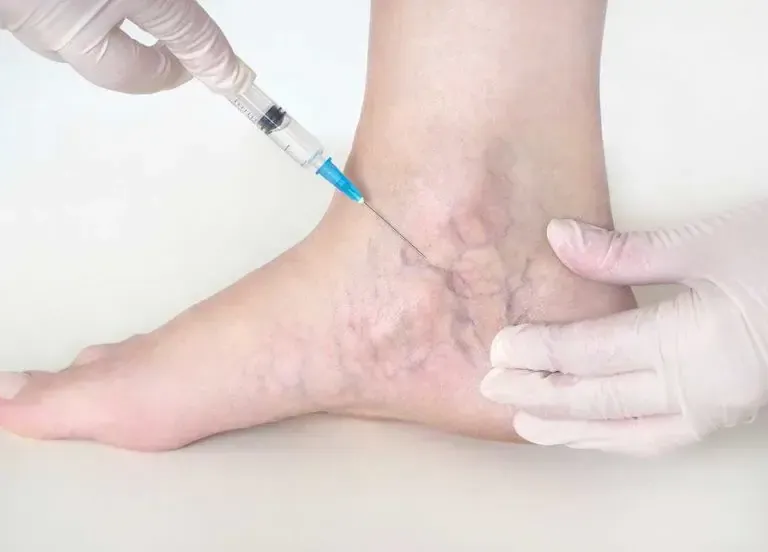
Sclerotherapy
Spider veins, also known as thread veins, broken veins or telangiectasia, of the leg are a common problem, particularly affecting women. Small red or purple veins can form anywhere on the leg and while they do not pose any major health risk, they may cause discomfort. Many people who have Thread Veins find them unsightly and embarrassing and often attempt to conceal them with clothing or resort to cosmetic cover-ups, the results of which are often disappointing.
Sclerotherapy Treatment
Sclerotherapy is a medical procedure to treat spider veins, in which a fine needle is used to inject a small amount of solution directly into the thread vein. The solution displaces the blood within the vein, making it blanch or turn white, and prevents blood from re-entering the vein.
The spider vein will fade within two to eight weeks following treatment. Some areas may, however, require repeat treatment to achieve optimum results. An interval of 6-8 weeks is recommended between treatments.

Candidates for Sclerotherapy
Every patient at will have an initial consultation with Varicose Veins MD Care vascular medicine specialist who will decide if you're a good candidate for the procedure. Pregnant women are not eligible for sclerotherapy treatment. You can have sclerotherapy if you take birth control pills. If you have a history of blood clot, your eligibility will be decided on an individual basis, and will depend on the area needing treatment and your overall health. Veins that are potentially usable for future heart bypass surgery will generally not be considered for sclerotherapy.
Sclerotherapy Side Effects
Most customers experience no adverse effects although some minor side effects have been reported. These include slight swelling which occurs as a reaction to the injection but this invariable subsides over 2-3 days. Swelling may occur in the veins of the lower leg or ankle. Although not dangerous, this should be treated at home with elevation.
Occasionally a small dark area of pigmentation resembling a freckle may remain. These spots usually disappear spontaneously as will any bruising within 2-14 days.
Side Effects of Sclerotherapy
After sclerotherapy, you may experience mild side effects such as itching, which can last for one or two days after the procedure. Also, you may experience raised, red areas at the injection site. These should disappear within a few days. Bruising may also occur around the injection side and can last days or weeks.
Frequently Asked Questions about Sclerotherapy
What is Sclerotherapy?
Superficial venous reflux is a disease that develops when the valves that keeps blood flowing out of your legs is damaged or diseased, causing blood to pool in your legs.
Is Sclerotherapy painful?
Customers who have received this treatment report little discomfort. Some experience a slight burning sensation immediately after the injection which lasts a few seconds.
What to do before Sclerotherapy?
Before sclerotherapy treatment, you should avoid certain medications. Talk to your doctor at Varicose Veins MD Care about all medicines you are taking. No lotion should be applied to the legs before the procedure. Some doctors recommend avoiding aspirin, ibuprofen or other anti-inflammatory drugs for 48-72 hours before sclerotherapy treatment.
Can spider veins be prevented?
There is no clear cut method of preventing the onset of Thread Veins, however, some authorities believe that the use of support hose, weight control and exercise may be beneficial.
Our Huntington Beach Vein Surgeon, Dr. Yasser Salem, received specialty training that keeps him on the leading edge of diagnostic and therapeutic technologies for the treatment of vein disease.
Contact us today to schedule your initial consultation.
We Also Offer:



